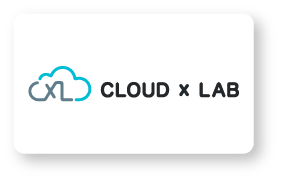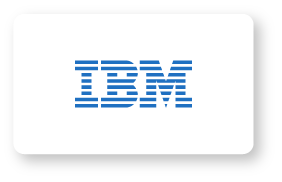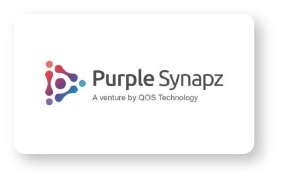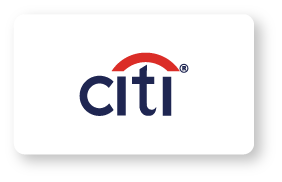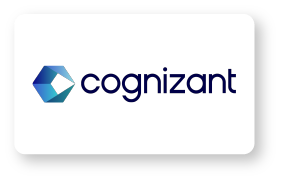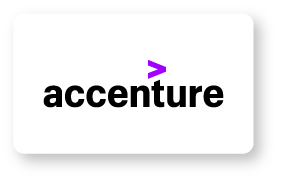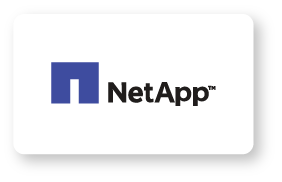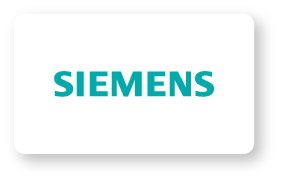Valid Participant Reviews
Master Your Domain from Industry Thought Leaders
Learn from the best industry mentors who have mastered the craft of leading emerging technologies

Dr. J B Simha
Dr. J B Simha excels in R&D, business intelligence, and analytics consulting, demonstrating his core competency. His expertise includes implementing expansive systems for telecom, BFSI, (more…)

Ratnakar Pandey
He is an Advisor and Consultant for Generative AI at NuWare, specializing in extracting valuable insights and developing practical models from predominantly unstructured data like text (more…)

Pradeepta Mishra
Pradeepta Mishra has 16+ years of experience and currently is the Co-Founder and Chief Architect of Data Safeguard Inc., leading a group of Data Scientists, computational linguistics (more…)

Usha Rengaraju
Usha currently heads the data science research at Exa Protocol. She is the world’s first women triple Kaggle Grandmaster. She was ranked as the top (more…)

Sandeep Giri
Sandeep is a seasoned and hands-on machine learning scientist with a strong experience in building world-class software products, machine learning and churning humongous data. His core expertise is in Deep Learning (TensorFlow, (more…)

Ravi Shukla
Ravi is a Data Scientist with expertise in the areas of Web Analytics, AI including Natural Language Processing & Machine Vision. He has 22 filed patents with USPTO out of which 12 have been (more…)

Dr. Angshuman Ghosh
Dr. Angshuman Ghosh is a data science and strategy leader with experience in retail, media, research, and tech domains. As a Data Scientist, he led data science and analytics projects using cutting-edge (more…)

Prahalad Karnam
Prahlad is a Strategist, Industry Leader, Change Expert and a Leadership Coach. He had led several engagements and business units globally by guiding companies in their business, operations, IT and Analytics strategy, and execution. (more…)

Dr. Gopal Pingali
Gopal is a leading subject-matter-expert in Cloud, AI, and Automation technologies. He has a proven track record of driving digital transformation at scale for 1K enterprises across multiple industries. (more…)

Akshay Kulkarni
Artificial Intelligence and Machine Learning Evangelist, an Author, a Speaker, and a Mentor who drives AI and Data Science-led strategic transformation. He had led strategy and transformation (more…)

Sayandeb Banerjee
Sayandeb has worked both as part of the large enterprises by setting up the analytics capabilities as well as a service provider for various enterprises. Sayandeb has also played several intrapreneurial roles like designing training and pedagogy (more…)

Amaralingeswara Rao Kaka
Amaralingeswara is well-experienced in a wide variety of software development and professional services include Product Development, Quality Assurance, Support, (more…)

Dr. Santosh Nair
Dr. Santosh Nair has extensive experience in statistical modelling and advanced analytics consulting. He has extensive experience in statistical modelling and advanced analytics consulting. His areas of specialization include Marketing and (more…)

Dr. Sai Hareesh
Dr. Sai Hareesh is currently working as an Innovator at Maestro Technologies, Inc. He has completed his Ph.D in Computer Vision from Sri Sathya Sai Institute of Higher Learning. He has 12+ years of (more…)

Dr. J B Simha
Dr. J B Simha excels in R&D, business intelligence, and analytics consulting, demonstrating his core competency. His expertise includes implementing expansive systems for telecom, BFSI, (more…)

Ratnakar Pandey
He is an Advisor and Consultant for Generative AI at NuWare, specializing in extracting valuable insights and developing practical models from predominantly unstructured data like text (more…)

Pradeepta Mishra
Pradeepta Mishra has 16+ years of experience and currently is the Co-Founder and Chief Architect of Data Safeguard Inc., leading a group of Data Scientists, computational linguistics (more…)

Usha Rengaraju
Usha currently heads the data science research at Exa Protocol. She is the world’s first women triple Kaggle Grandmaster. She was ranked as the top (more…)

Sandeep Giri
Sandeep is a seasoned and hands-on machine learning scientist with a strong experience in building world-class software products, machine learning and churning humongous data. His core expertise is in Deep Learning (TensorFlow, (more…)

Ravi Shukla
Ravi is a Data Scientist with expertise in the areas of Web Analytics, AI including Natural Language Processing & Machine Vision. He has 22 filed patents with USPTO out of which 12 have been (more…)

Dr. Angshuman Ghosh
Dr. Angshuman Ghosh is a data science and strategy leader with experience in retail, media, research, and tech domains. As a Data Scientist, he led data science and analytics projects using cutting-edge (more…)

Prahalad Karnam
Prahlad is a Strategist, Industry Leader, Change Expert and a Leadership Coach. He had led several engagements and business units globally by guiding companies in their business, operations, IT and Analytics strategy, and execution. (more…)

Dr. Gopal Pingali
Gopal is a leading subject-matter-expert in Cloud, AI, and Automation technologies. He has a proven track record of driving digital transformation at scale for 1K enterprises across multiple industries. (more…)

Akshay Kulkarni
Artificial Intelligence and Machine Learning Evangelist, an Author, a Speaker, and a Mentor who drives AI and Data Science-led strategic transformation. He had led strategy and transformation (more…)

Sayandeb Banerjee
Sayandeb has worked both as part of the large enterprises by setting up the analytics capabilities as well as a service provider for various enterprises. Sayandeb has also played several intrapreneurial roles like designing training and pedagogy (more…)

Amaralingeswara Rao Kaka
Amaralingeswara is well-experienced in a wide variety of software development and professional services include Product Development, Quality Assurance, Support, (more…)

Dr. Santosh Nair
Dr. Santosh Nair has extensive experience in statistical modelling and advanced analytics consulting. He has extensive experience in statistical modelling and advanced analytics consulting. His areas of specialization include Marketing and (more…)

Dr. Sai Hareesh
Dr. Sai Hareesh is currently working as an Innovator at Maestro Technologies, Inc. He has completed his Ph.D in Computer Vision from Sri Sathya Sai Institute of Higher Learning. He has 12+ years of (more…)

Sandeep Vijayaraghavan K
Sandeep is cybersecurity and network security specialist who has successfully delivered several projects to clients from different sectors. Sandeep has expertise in devising and implementing (more…)

Rajiv R Chetwani
He has adorned various other coveted positions at ISRO Satellite Centre, Bengaluru. He has received ISRO’s team excellence award for 2015. In July 2015, he became a part of Mars Orbiter Mission Testing Team. He is the recipient of (more…)

Sridhar Govardhan
An expert in information security focused on application vulnerabilities, who spearheads organizational initiatives for building self-defensible enterprise network. With his hands-on knowledge in (more…)

Dr. Ram Kumar G
Dr. Ram Kumar is a seasoned cyber security & risk professional with a 22-year corporate background spanning various multinational companies in diverse sectors. (more…)

Dr. Paras Arora
Dr. Paras’ core expertise is in devising security standards such as ISO 27001and PCI DSS and has proven skills in SoX – 404, Third-Party Vendor Risk Assessment, Business Continuity Management, VAPT, Applications Security Assessments, (more…)

Dr. Soumyo Maity
An expert on Software and Application Security with security development lifecycle (SDL) across large enterprises. Core competence includes Threat modeling, code review, architecture (more…)

Ajay Pandey
Ajay Pandey is seasoned security, networking and IT strategy professional with entrepreneurial zeal. Ajay is specialized in networking, security and criminal law, IPR with several global (more…)

Unnikrishnan P
Unnikrishnan is focused on building and delivering cybersecurity capabilities to improve the cyber risk posture of the clients across industry sectors. His core expertise is in the area of Information Security Consulting, Transaction & (more…)

Chinmay Hegde
Chinmay has worked for global security giants including McAfee, Symantec and Cisco. Chinmay possesses expertise in the area of Security Analytics, Security Compliance Enforcement, and Dynamic (more…)

Aditya Jain
Aditya is seasoned cybersecurity professional with core expertise in the banking, financial services, energy, automobile, government, military, telecom, and utility sectors in penetration testing. He holds extensive experience in (more…)

Ashok Sharma
Ashok is a cybersecurity expert who has competency in shaping most of the dynamic security solutions and products. His experience is mainly in leading R & D teams in Check Point, Wipro, and Nokia, and advocates cybersecurity platforms (more…)

Mahesh Paradkar
Mahesh heads the IBM Security Labs in Pune and has the functional responsibility of Encryption and Key Management IBM Security products. He plays an instrumental role in establishing relationships with academic institutions, (more…)

Nishanth Kumar Pathi
Nishanth is competent in Advisory, Consulting, Managed Services and Training in DevSecOps, Cloud Security, Cybersecurity and Information Security domains for various sectors, enabling (more…)

Dr. Sai Sushanth
A cyber law expert and techno-legal consultant. He is a law graduate who has completed a master’s in cyber law and cybersecurity from the National Law University, Jodhpur. Sushanth is one of the 45 Cyber Law Compliance Auditors in (more…)

Dhruv Kalaan
A young, dynamic Cybersecurity expert, competent in building large-scale resilient systems at scale for complex operations. Dhruv has been an open source proponent and contributor with very deep (more…)

Anju Bhatia
Anju is a leadership development and talent management professional with experience in establishing and leading L & D functions for organizations in IT, ITeS, (more…)

Saritha Digumarti
Saritha has extensive analytics and consulting experience across diverse domains including retail, health-care and financial services. She has been helping clients to tackle complex business problems by applying analytical (more…)

Nazarius Manoharan
Created the Kingfisher ‘Ooo…la…la… la…la…’ TV commercial and has won several international and national awards in Advertising, Press, Radio, etc. A corporate Trainer with competency in (more…)

Madhukar Rajendra
A management professional who has also worked with IT companies in the US for over a decade. He brings out his practical experiences on leadership, attitude, team building, and motivation in his programs. He has been conducting programs and (more…)

Pavan Sriram
Pavan Sriram is a management professional with experience in HR consulting, and Learning and Development in India and abroad. Pavan is an active speaker at many forums specifically on topics pertaining on (more…)

Ramesh Soundararajan
Ramesh has pioneered an analytical approach in reviewing information and integrating insights across different HR functions to bring the best foot forward. The approach encompasses all HR (more…)

Sanjay Shelvankar
Sanjay has been instrumental in developing dozens of best practices in the realm of talent acquisition, transformation and retention in the companies he has worked for. He has experience in leading large development team for technical (more…)

Manoj Kumar
Manoj is a thought leader, HR 40Under40 award winner, influencer, blogger, and speaker who has experience in various leadership roles. His core competency includes salesforce effectiveness, people risk monitoring, talent acquisition (more…)
RACE- Thought Leader in Next-Gen Technology Education
Being a thought leader in the world of next-gen tech education, RACE supports its program participants to reinvent their career through actionable learning.




























